Introduction
Accounts payable is a critical component of a business's financial health, extending beyond recording liabilities to encompass meticulous expense management and financial compliance. The accuracy of accounts payable directly impacts financial reporting and cash flow optimization, essential for informed decision-making. To excel in this role, an understanding of accounting practices and effective financial data analysis is necessary.
With responsibilities central to a company's fiscal management, an accounts payable clerk plays a key role in a small business's overall financial wellness. This article explores the importance of accurate accounts payable calculation, managing payables efficiently, and leveraging accounting software for effective payables management. Additionally, it delves into calculating accounts payable turnover ratio, analyzing the accounts payable amount on the balance sheet, and understanding accounts payable days (DPO).
By following best practices and adopting advanced techniques, businesses can optimize their accounts payable processes and pave the way for strategic growth and sustainable profitability.
Understanding the Role of Accounts Payable in Business Finance
Accounts payable, the ledger of obligations to suppliers and vendors, is a vital component of a business's financial health. The role of an accounts payable clerk extends beyond simply recording liabilities; it involves meticulous management of expenses and adherence to financial compliance. Through precise invoice processing and payment, these professionals ensure that a business maintains a positive rapport with its partners, which is instrumental in fostering reliable supply chains.
Additionally, the accuracy of accounts payable directly influences financial reporting and cash flow optimization, which are crucial for robust financial planning and informed decision-making. To excel in this role, a blend of qualifications is necessary, including an understanding of accounting practices and the ability to analyze financial data effectively. In essence, an accounts payable clerk is a key contributor to a small business's overall financial wellness, with responsibilities that are central to the company's fiscal management.
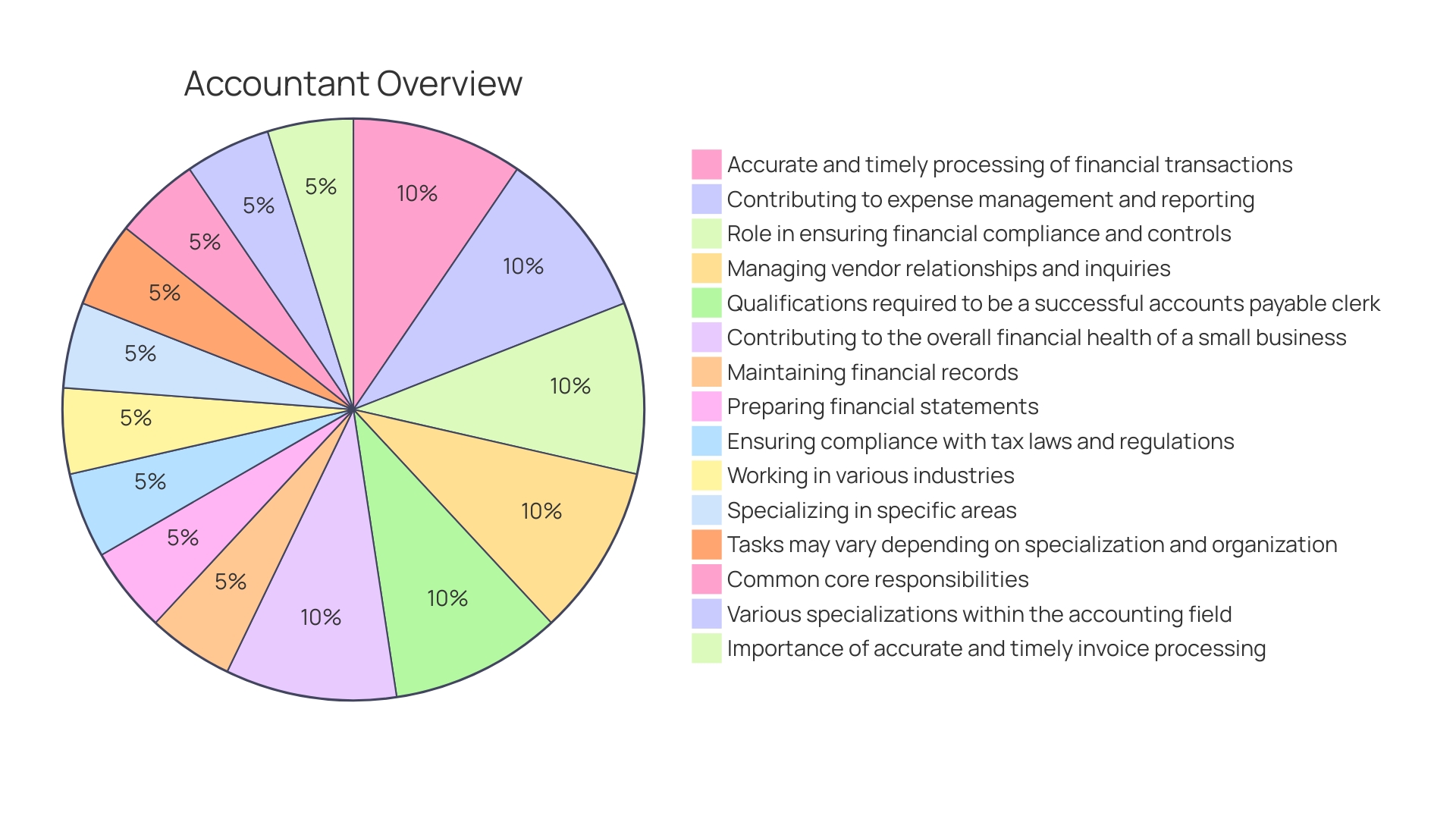
Importance of Accurate Accounts Payable Calculation
A precise management of accounts payable is a linchpin in the robust financial framework of a business. It transcends the mere tracking of outstanding liabilities, serving as a cornerstone for judicious budgeting and astute financial planning. It's about crafting a financial narrative that resonates with clarity and accountability.
For instance, imagine the chaos when unforeseen events—like the unexpected federal holiday for President Reagan's funeral—disrupt the regular scrutiny of financial reports. Such incidents underscore the importance of having real-time insights into accounts payable to avoid fiscal disarray.
In a world where financial compliance is not just a necessity but a mandate, the timeliness of vendor payments is non-negotiable. It safeguards the integrity of business relationships and shields the company from the repercussions of late payment penalties. Moreover, meticulously calculated accounts payable contribute significantly to the authenticity of financial statements, which are instrumental in steering strategic decisions and fulfilling regulatory obligations.
This notion is echoed in the experiences of small business accountants who confront the realities of outdated systems—a testament to the urgency for innovative solutions that can synchronize financial data with operational efficiency. Such advancements would not only revolutionize the quality of financial reporting but also enhance the overall financial health of the business. After all, an accounts payable clerk's role is not just transactional but pivotal in shaping the financial destiny of the company.
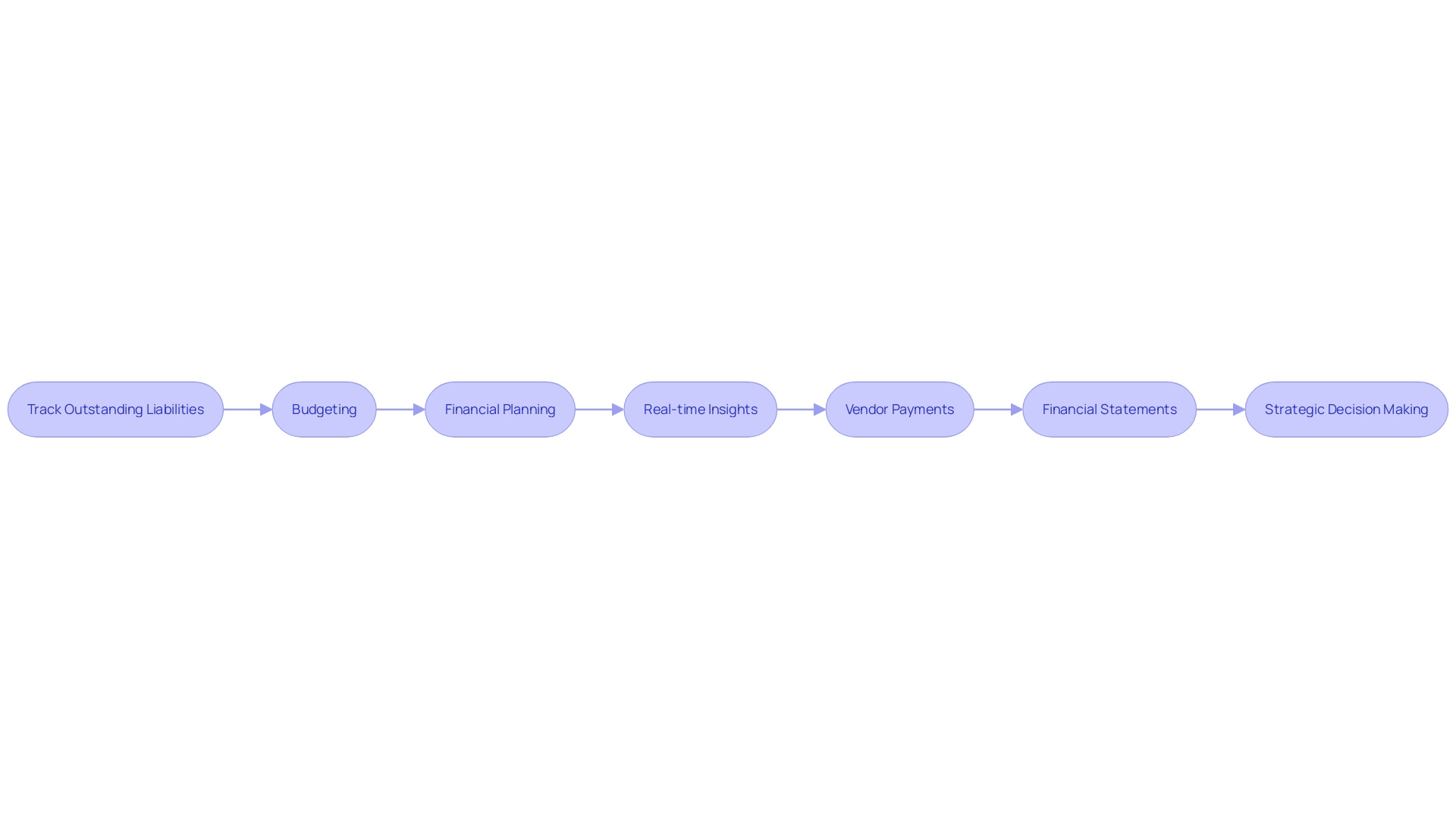
The Formula for Calculating Accounts Payable
In the realm of small business accounting, managing accounts payable is a critical task that goes beyond simple arithmetic. The formula for computing accounts payable is indeed fundamental: Begin with the amount owed at the start of the period (Beginning Accounts Payable), add the total credit purchases made (Purchases), and subtract the amount owed at the period's end (Ending Accounts Payable) to arrive at your Accounts Payable. This equation, while straightforward, stands at the heart of effective financial operations.
For example, consider a small business that begins the quarter with an accounts payable balance of $5,000, makes additional credit purchases amounting to $20,000, and ends with $4,000. The accounts payable for the period would be $21,000. This figure is pivotal as it not only reflects the business's short-term obligations but also impacts cash flow management and liquidity—a key concern for any small business.
Moreover, accurate and timely management of accounts payable is essential for maintaining supplier relationships and ensuring financial compliance. An accounts payable clerk plays a vital role in this process, overseeing the accurate processing of transactions to uphold the financial health of the business. With 33.2 million small businesses in the United States as of early 2024, the significance of robust financial practices cannot be overstated.
To set this process in motion, small business owners must first establish a firm accounting foundation. This includes selecting an appropriate accounting method, creating a comprehensive chart of accounts, and defining the fiscal year. With these systems in place, businesses can better navigate the complexities of financial record-keeping and analysis, ensuring that every decision made is informed and strategic.
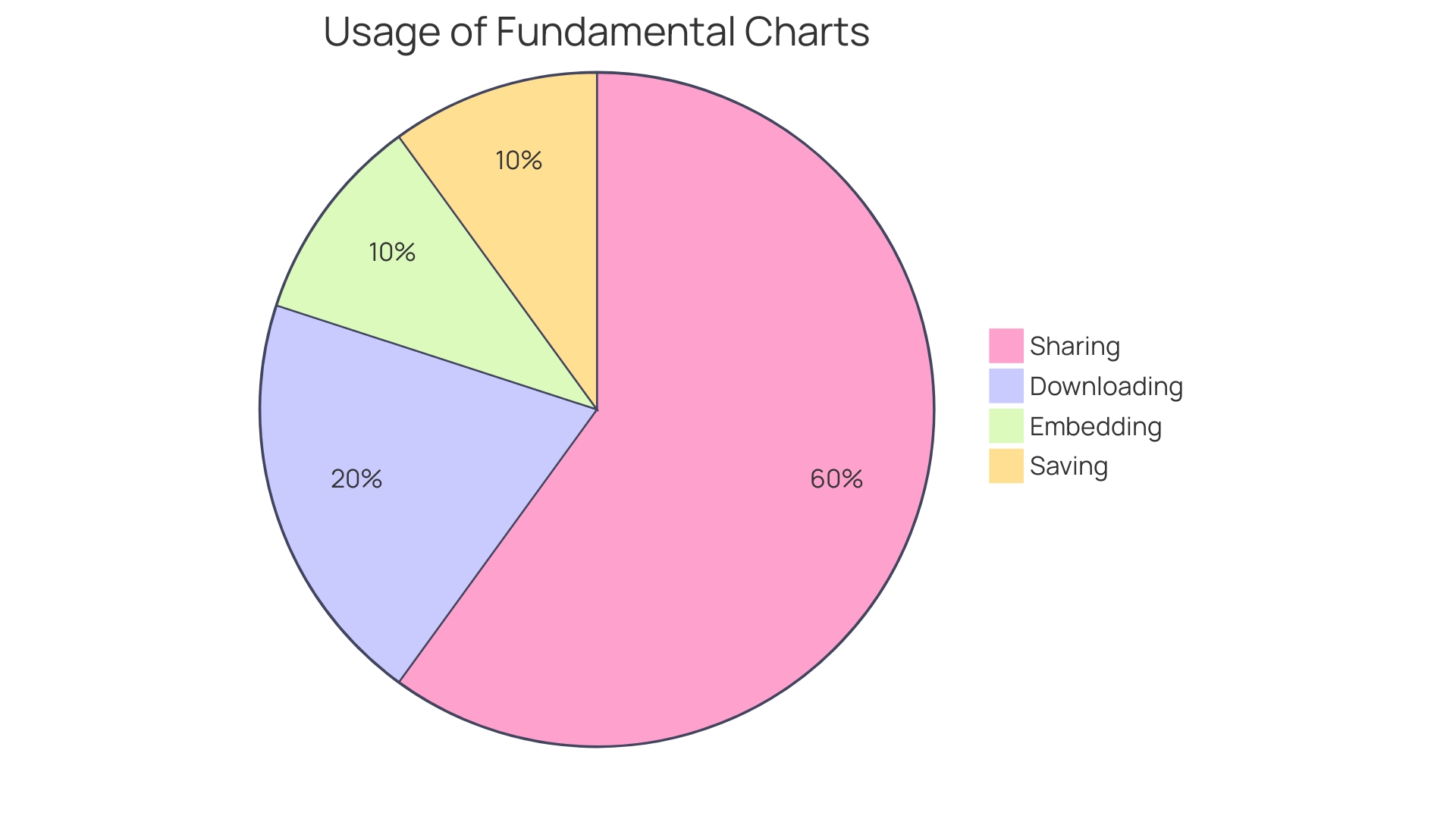
Step-by-Step Guide to Calculating Accounts Payable
Ecommerce accounting goes beyond simple bookkeeping; it is a crucial element for making sound business decisions. It's not just about recording transactions – it's about understanding them. Here's a breakdown of managing accounts payable, a key component of your financial operations:
- Identify the initial balance of accounts payable. This is your starting point for any given period and sets the foundation for accurate calculations.
- Tally all credit purchases made within the accounting period. These are the costs incurred on credit and form the bulk of accounts payable calculations.
- Deduct the final accounts payable balance from the total credit purchases. This subtraction gives you the net amount owed to suppliers.
The accounts payable clerk plays a vital role in this process. They not only manage these calculations but also ensure that all transactions are processed accurately and on time. This precision in processing invoices and payments is essential for maintaining healthy vendor relationships and upholding financial compliance.
Moreover, the clerk's contribution to financial reporting and expense management is significant, as it directly influences the overall financial health of the business. Their work, often detailed and meticulous, requires a deep understanding of accounting principles, effective communication skills, and the ability to work with complex financial data.
In today's fast-paced business environment, the role of an accounts payable clerk is ever-evolving. With the rise of green technology, for instance, clerks may now oversee transactions related to alternative fuels or innovative recycling solutions. Such advancements highlight the need for continuous learning and adaptation in accounting roles.
In essence, managing accounts payable is a dynamic task that requires vigilance and accuracy. It's a testament to the vital role financial professionals play in steering a business towards profitability and sustainability.
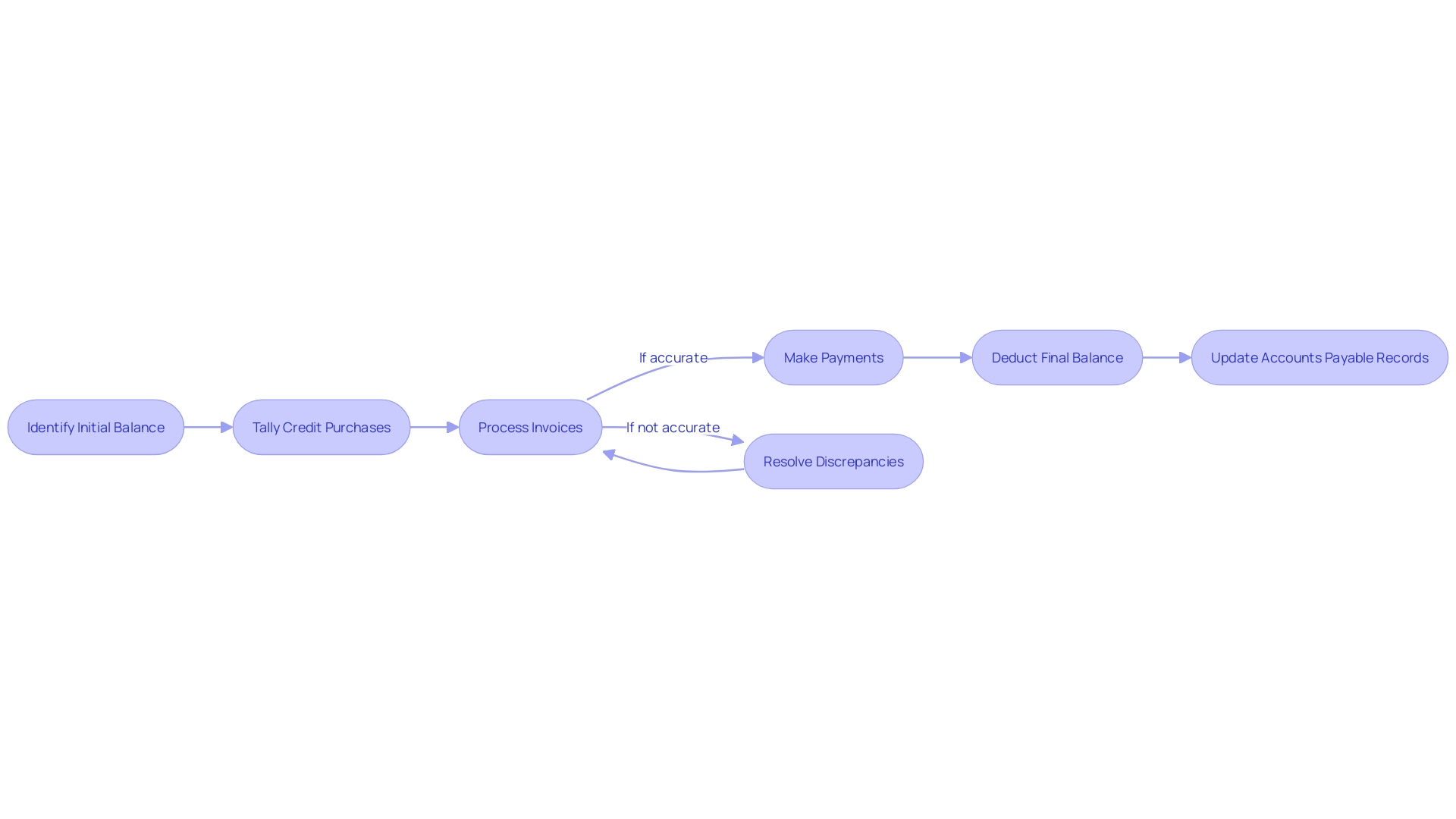
Reviewing Unpaid Bills and Matching to Invoices
Accurate accounts payable management is a pivotal element of a sound financial strategy for any business. It starts with a meticulous review of unpaid bills, which involves comparing them with corresponding invoices and delivery receipts. This step is critical to verify that each charge is justified and corresponds to actual goods or services received.
Identifying and rectifying any mismatches or errors is crucial before these bills are included in the accounts payable ledger. This precision not only ensures financial integrity but also prevents overpayment and aids in maintaining cordial relationships with suppliers.
For example, in sectors like healthcare, where administrative tasks can be overwhelming, the use of advanced technology such as generative AI has significantly streamlined processes. Medical providers, who previously had to manually transcribe detailed visit notes, now benefit from AI solutions that save time and reduce errors, allowing them to focus more on patient care. Similarly, in accounting, embracing such technological advancements could transform the way financial transactions, like accounts payable, are managed, leading to improved efficiency and reduced potential for human burnout.
Moreover, as indicated by recent legal discussions, AI technology's integration into various professional sectors, including the legal aspects of financial compliance, is rapidly evolving. This suggests that the future of accounts payable could also see increased adoption of AI to assist with invoice processing and compliance checks, thereby enhancing accuracy in financial reporting. With the legal sector actively exploring Ai's capabilities, it's clear that a similar approach could greatly benefit financial operations, ensuring that businesses stay ahead in terms of efficiency and regulatory adherence.
In light of these developments, it is evident that keeping abreast of technological advancements and best practices in invoice management is not just about maintaining financial health; it's about leading a business towards a future of streamlined operations and strategic growth.
Running an Accounts Payable Aging Report
An accounts payable aging report is a key financial tool that categorizes and tracks the payment status of outstanding invoices. It's a structured record that divides invoices into groups based on their due date ranges. This strategic approach to managing payables allows businesses to efficiently prioritize their payments, spotlighting invoices that are overdue or nearing their payment deadlines to prevent late fees and maintain supplier relationships.
Utilizing an accounts payable aging report can be instrumental in ensuring a steady cash flow. By systematically reviewing this report, businesses optimize their payment processes, which is essential for maintaining liquidity and supporting financial stability. Especially in light of recent data indicating that people are increasingly using credit cards for purchases, understanding and managing credit effectively is crucial.
It aligns well with the broader financial trend towards maintaining good credit management practices, as evidenced by the 2022 Diary of Consumer Payment Choice findings.
The importance of regular analysis of the accounts payable aging report cannot be overstated. It not only helps in averting financial penalties but also fortifies the financial health of the organization by encouraging disciplined expense management. Moreover, in the context of expense management, it's crucial for businesses to reevaluate all expenditures and prioritize them, ensuring that the most critical payments are made first, thereby safeguarding the company's credit standing and reputation.
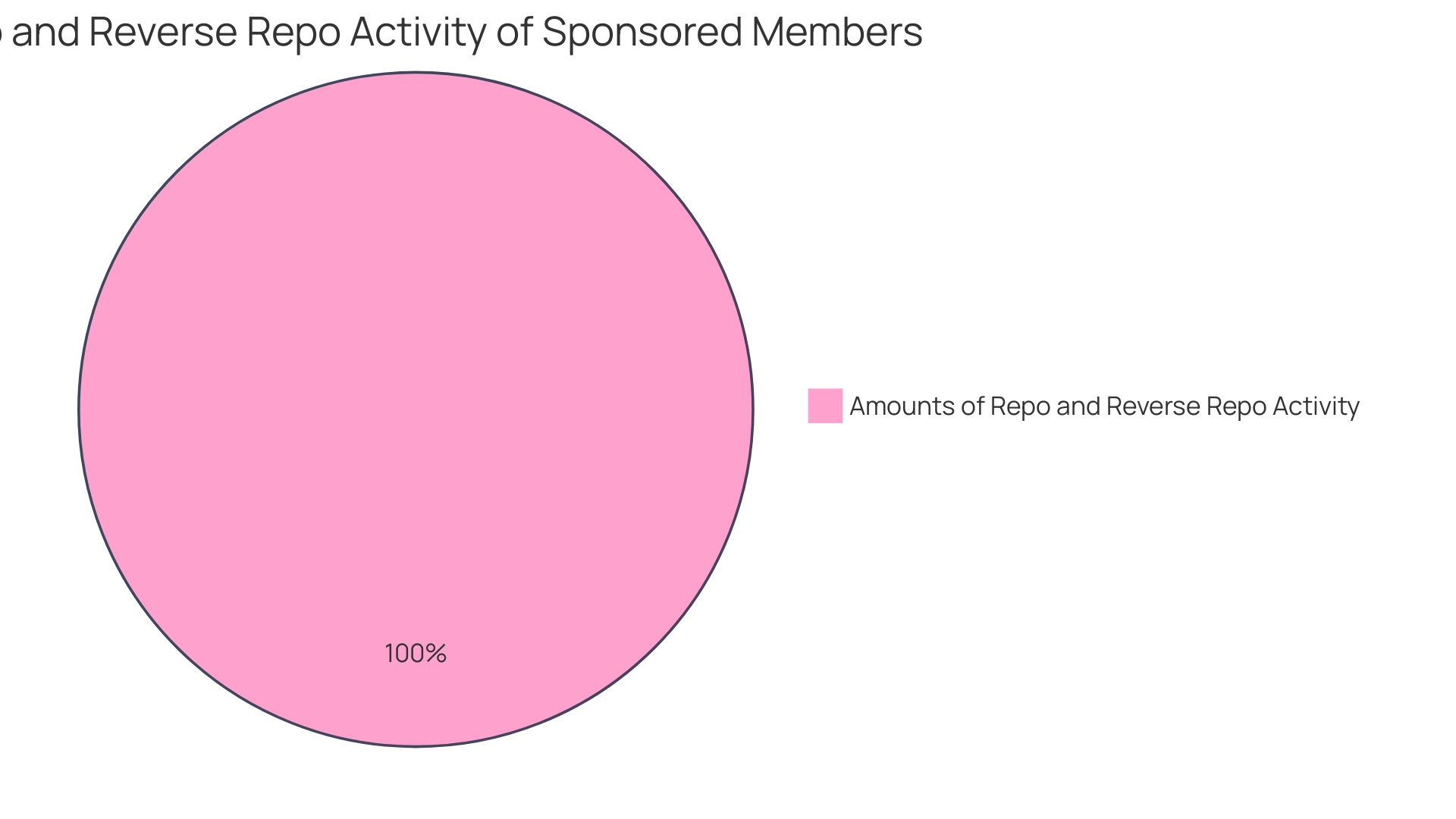
Setting Up Rules for Early Payment Discounts
Implementing early payment discounts is a strategic move for businesses aiming to enhance their accounts payable operations. These discounts act as a catalyst for suppliers to receive payments promptly, which can lead to a reduction in the overall accounts payable balance. It's a delicate balance to maintain; the discounts must be weighed against the financial objectives of the organization.
For instance, integration of payment systems like Stripe can streamline the process, ensuring efficiency in payment proposals, captures, refunds, and fraud analysis, ultimately benefiting the customer experience. As Nick Welby of CIPS emphasizes, maintaining a healthy cash flow and respecting payment terms are crucial for the sustainability of supply chains. Moreover, the alarming trend of businesses disregarding payment regulations highlights the necessity for robust financial compliance and controls.
By focusing on prompt and accurate invoice processing, accounts payable clerks play a pivotal role in managing expenses and upholding the financial health of a business, especially in the face of potential economic downturns.
Entering Bills into Accounting Software
Leveraging advanced accounting software transforms the accounts payable landscape, providing businesses a robust solution to digitize invoices, meticulously track due dates, and automate payment reminders. These systems offer more than just convenience; they represent a significant leap in accounting efficiency. For instance, consider the startup ecosystem, where founders often encounter a stark contrast between real-time data in product development and the lagging financial reports.
Modern accounting platforms aim to bridge this gap, offering dynamic, dashboard-driven insights akin to those found in other business areas.
Invoices are the linchpin of business transactions, encapsulating the details of goods and services exchanged, amounts due, and payment timelines. When these invoices are entered into a digital accounting system, they are transformed from static documents into actionable data. This process not only minimizes the risk of human error but also fortifies the financial management process for businesses of all sizes, from burgeoning small enterprises to established corporations.
The narrative that every financial category and transaction can be represented as a transfer between accounts is not just a theoretical concept; it is a practical reality in today's accounting software. The transmutation of cash into assets, like the transformation of $1,500 into a laptop, is seamlessly recorded, offering business owners a clear and comprehensive view of their financial standings.
In the current economic climate, where inflation and interest rates are of paramount concern, the adaptability provided by such software is not just a luxury but a necessity. The right accounting tool, such as QuickBooks Online—lauded for its comprehensive features—can be a beacon for businesses navigating the tumultuous seas of financial management, ensuring not just survival but the potential for growth and profitability.
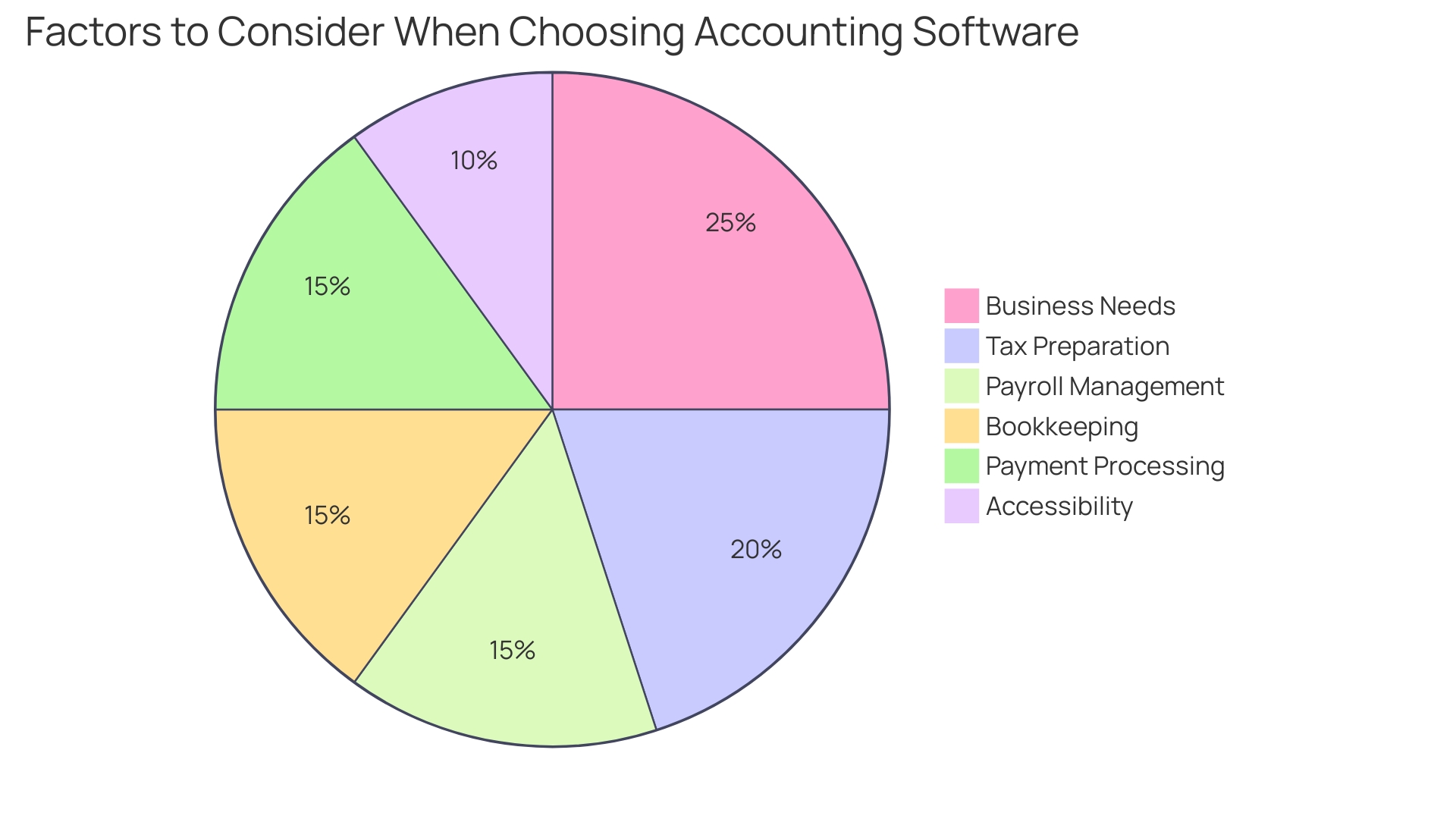
Analyzing the Accounts Payable Amount on the Balance Sheet
Delving into the balance sheet's accounts payable figure unveils critical insights into an enterprise's fiscal wellbeing. This metric serves as a barometer for a company's liquidity by illustrating the ratio of short-term debts to assets. By juxtaposing accounts payable against other financial parameters—like current assets or revenue streams—organizations gain a clearer picture of their capacity to fulfill impending financial commitments.
For construction businesses, whose financial landscape is punctuated with unique challenges, the precision in distinguishing balance sheet items from immediate expenses is paramount. This distinction not only reflects a business's present financial status but also influences strategic decision-making geared towards value maximization, which is often the ultimate goal for both burgeoning and established firms.
Calculating Accounts Payable Turnover Ratio
Understanding the velocity at which a company settles its bills is critical for maintaining smooth relationships with suppliers and managing liquidity. The accounts payable turnover ratio serves as a key indicator of this aspect. It is calculated by dividing the Cost of Goods Sold by the Average Accounts Payable.
A higher ratio implies swift payments to suppliers, reflecting a proactive approach to managing payables. Conversely, a lower ratio can signal potential delays or inefficiencies in the payment processes that require attention.
Notably, companies like Monday.com have demonstrated the significance of efficient growth and becoming free cash flow positive, especially when growth rates decelerate. Efficient operations, including well-managed accounts payable, contribute to a healthier cash position, allowing for increased investment opportunities and creating more value for shareholders. Moreover, effective accounting practices are foundational to any business's success.
They encompass activities like choosing the right accounting method and setting up a chart of accounts, which can significantly impact financial transparency and decision-making.
It's essential for businesses to regularly assess their financial strategies, including expenditure prioritization and budget management, to ensure they are aligned with long-term goals. This strategic approach to finance, complemented by a robust understanding of accounting principles, can help navigate through economic uncertainties and maintain a competitive edge.
Understanding Accounts Payable Days (DPO)
The Days Payable Outstanding (DPO) is a crucial metric for companies to manage their cash flow efficiently. It indicates the average time a company takes to settle its bills with vendors. To calculate DPO, divide the total accounts payable by the cost of goods sold, and then multiply by the number of days.
The resulting figure helps businesses to strategize their payment cycles and maintain a healthy balance between preserving cash on hand and sustaining good vendor relationships. While a higher DPO may suggest a company is utilizing longer credit terms offered by suppliers, a lower DPO could reflect a strategy to take advantage of early payment discounts or simply a practice of clearing dues promptly to ensure a strong supply chain.
How to Calculate Accounts Payable Days
To proficiently manage accounts payable days (DPO), which is an essential metric for assessing how long a company takes to pay its suppliers, the calculation involves a few straightforward steps. First, ascertain the total amount owed to suppliers, known as accounts payable. Next, determine the average daily purchases by dividing the cost of goods sold by the number of days in the period being analyzed.
Finally, take the total accounts payable and divide it by the average daily purchases to obtain your DPO. This number reveals the average duration in days that your business takes to settle its debts with suppliers.
Understanding DPO is crucial, especially in the context of liquidity management and operational efficiency. A higher DPO might imply better cash management, allowing a business to utilize its cash on hand for longer periods. However, an excessively high DPO could also signal potential issues, like dissatisfaction among suppliers or even a company's inability to pay on time, which may lead to strained relationships and less favorable payment terms.
Therefore, maintaining a balanced DPO is vital for the financial health of the business.
Recent statistics from the Chartered Institutes of Procurement & Supply indicate that, on average, 26% of payments were late in 2023, and large businesses took an average of 36 days to pay. This highlights the importance of effective accounts payable management and the potential consequences of neglecting it. By keeping a vigilant eye on DPO and other financial metrics, businesses can navigate through the complexities of cash flow management and maintain robust supplier relationships.
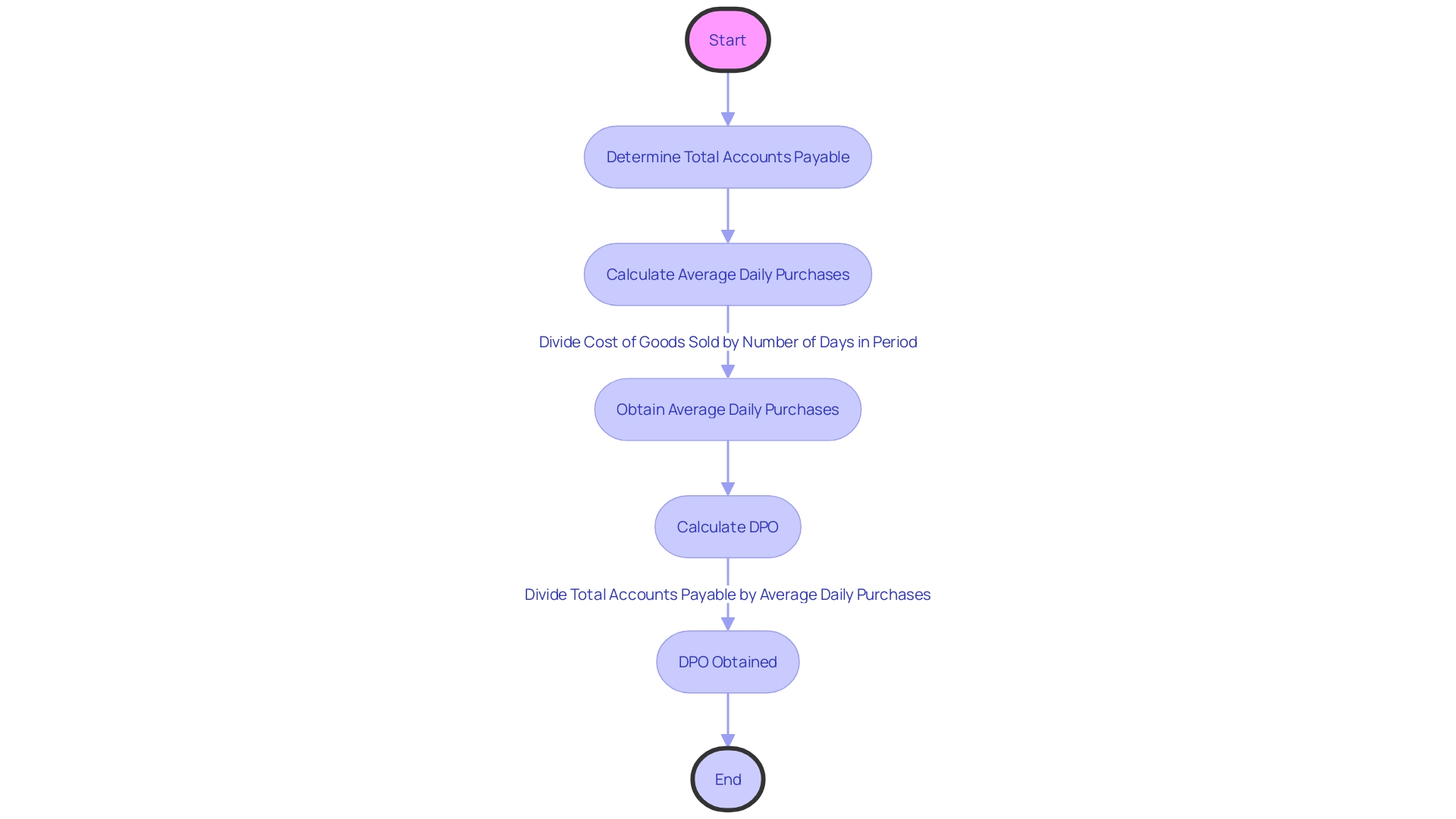
Advanced Calculations and Analysis
Exploring beyond fundamental calculations, cost accounting offers sophisticated tools and methodologies that delve into the granular aspects of financial management. Evaluating the implications of early payment discounts on overall expenses can lead to more strategic decision-making, particularly for businesses looking to optimize their cash flow. Moreover, tracking and interpreting the accounts payable turnover ratio offers valuable insights into the efficiency of a company's credit practices.
This ratio, when observed over time, reveals trends that aid in assessing how effectively an organization manages its short-term obligations.
Furthermore, benchmarking plays a crucial role in maintaining competitive standing. By comparing accounts payable performance to industry norms, companies can identify areas for improvement, adopt best practices, and ultimately enhance their operational efficiency. This approach reflects the philosophy behind zero-based budgeting systems, like those used by YNAB, which emphasize the importance of assigning every dollar a purpose, thereby fostering intentional spending and robust financial health.
Incorporating these advanced techniques into cost accounting practices aligns with the movement towards more dynamic and precise financial management, mirroring the shift in diverse industries where technology and automation are being embraced to tackle complex challenges. For instance, health systems are increasingly leveraging automation to streamline administrative tasks, a testament to the urgency of adopting efficient processes in financial reporting and management. By embracing such innovations, businesses can not only ensure compliance and control but also pave the way for strategic growth and sustainable profitability.
Best Practices for Managing Accounts Payable
Optimizing accounts payable (AP) is a strategic component in managing business finances. To streamline this process, start by establishing robust AP policies. Such guidelines ensure consistency and compliance, which is crucial for accurate financial reporting.
Negotiating with suppliers is also beneficial. By regularly reviewing contracts, you can secure favorable terms that may include discounts or extended payment periods, aiding cash flow management.
Integrating automation into AP processes cannot be overstated. Deploying tools like Ramp, Bill, Expensify, or AvidXchange, which leverage artificial intelligence, can significantly reduce overhead. The global market for AP automation is projected to reach $5.3 billion by 2028, indicating a growing trend towards efficiency.
Conducting periodic audits is another best practice. By identifying discrepancies early, you can avoid financial misstatements and maintain the integrity of your financial data.
Effective communication with suppliers is key to resolving issues swiftly. An open line of contact helps in addressing any payment discrepancies or disputes and fosters a trustworthy relationship.
Finally, monitoring AP metrics is essential for continuous improvement. Analyzing data can reveal insights into payment cycle efficiency, average processing cost per invoice, and could inform strategic decisions to enhance the AP function.
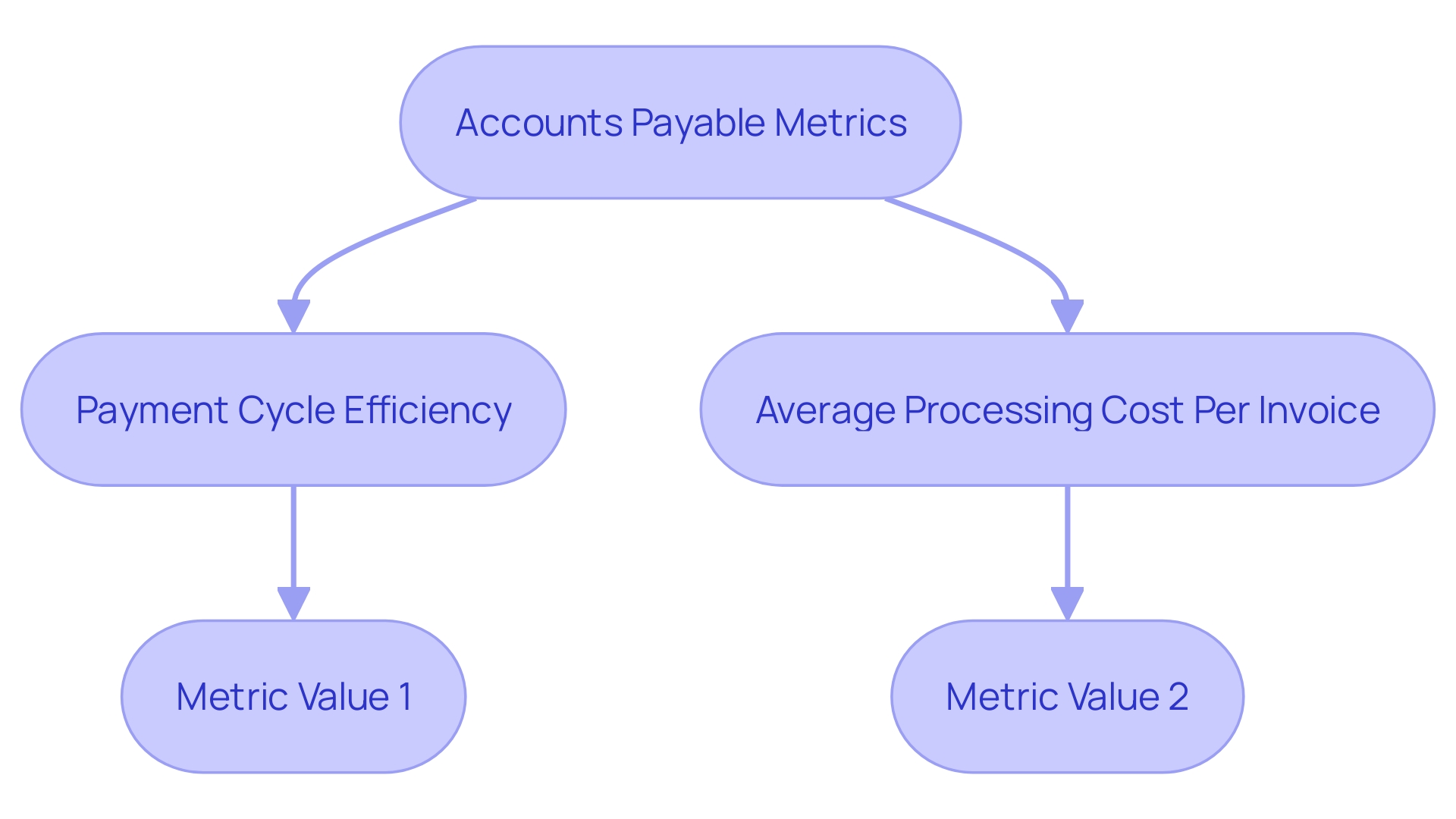
Leveraging Accounting Software for Effective Payables Management
Accounting software serves as a crucial tool for businesses looking to enhance their financial management capabilities. Its automated features, such as invoice processing and payment scheduling, are designed to streamline the accounts payable process. Moreover, the real-time reporting functionality provides businesses with a clear, up-to-date view of their financial commitments.
This integration of various capabilities within a single system can significantly reduce manual efforts, much like how Somerset Academies of Texas consolidated their disparate systems to improve efficiency and reduce errors in their administrative processes. The importance of such software is echoed in the sentiments of professionals who emphasize the transformative impact of diligent accounting practices on business success. By adopting a robust accounting platform, companies can achieve a level of efficiency and insight that supports better decision-making and fosters long-term growth.
Conclusion
In conclusion, accurate accounts payable management is crucial for a business's financial health. An accounts payable clerk plays a key role in expense management and financial compliance, impacting financial reporting and cash flow optimization. By understanding accounting practices and analyzing financial data effectively, businesses can excel in managing payables and ensure overall financial wellness.
To calculate accounts payable, consider beginning and ending balances, as well as credit purchases made. Accurate and timely management is essential for supplier relationships and compliance.
Running an accounts payable aging report helps prioritize payments and maintain cash flow. Implementing rules for early payment discounts enhances operations and cash flow. Leveraging accounting software streamlines processes and provides real-time insights.
Understanding the accounts payable amount on the balance sheet provides critical insights into a company's fiscal wellbeing. Analyzing the accounts payable turnover ratio indicates the efficiency of credit practices.
Best practices for managing accounts payable include establishing robust policies, negotiating with suppliers, integrating automation, conducting periodic audits, and maintaining effective communication.
In summary, accurate accounts payable management is vital for financial health and strategic growth. By following best practices, leveraging technology, and analyzing key metrics, businesses can optimize their payables processes and pave the way for sustainable profitability.




